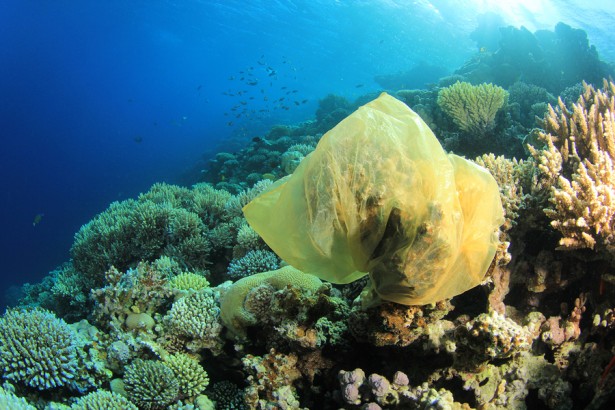The world’s oceans have become a dumpster site as a new study released notes that five trillion pieces of trash are situated in the world’s oceans. Although it has been reported on the astronomical amount of plastic pollution floating around, it did note there are fewer small particles than initially believed. This means that it remains a mystery as to how the environment is responding to garbage.
According to Los Angeles, California-based non-profit advocacy group 5 Gyres, scientists gathered the data by collecting plastic from various regions of the ocean with nets and then utilized computer models to estimate on just how much garbage is located in the ocean.
Researchers say there is more than five trillion pieces of plastic weighing about 270,000 tons. Study authors purport this trash is being distributed across the ocean. However, at the same time, scientists state they only discovered roughly one-hundredth as many sand-size particles as their models had projected.
In other words, researchers found ultra-fine bits of plastic, or microplastics.
The reason why this is so important is because sea life can be seriously affected if they digest small plastic pieces. Scientists have attributed this garbage to the deaths of birds, fish and other ocean creatures.

“There’s much more plastic pollution out there than recent estimates suggest,” said Marcus Eriksen, research director of 5 Gyres, in a statement. “It’s everything you can imagine made of plastic. It’s like Walmart or Target set afloat.”
The findings of this study were published in the peer-reviewed journal PLOS ONE.
Although scientists discovered less garbage, it may not exactly be a good thing for the environment. So where exactly is all of this garbage going then?
Scientists are unsure as the answer remains a mystery considering that the sun, wind and waves destroy the plastic into minuscule bits. With plastic production amplified over the last three decades, our plastic garbage will continue to be an important issue to address.
“We don’t know what this plastic is doing,” lead study author Andres Cozar Cabañas said. “The plastic is somewhere—in the ocean life, in the depths, or broken down into fine particles undetectable by nets.”
Some of the theories put forward include trash appearing on shores, sinking to the bottom of the ocean, UV degradation, diminished buoyancy, biodegradation and organisms’ ingestion.
If an immense amount of fish are consuming plastics then it could very well create a crisis on-land, particularly when it comes to imbibing tuna. Kara Lavender Law of the Sea Education Association in Woods Hole, Massachusetts told the Associated Press that when fish eat plastics then it’ll produce toxic chemicals, which can be detrimental to our health.
“Am I being poisoned by eating the fish on my plate?” she asked. “We have very little knowledge of the chain of events that could lead to that. But it’s a plausible scenario that plastic ingested at lower levels of the food web could have consequences at higher levels of the food chain.”
For years, scientists have been warning the international community about the dangers, hazards and risks posed to the world if oceans are transformed into nothing more than dumpster sites as creatures consume a lot of garbage.



